The Gladden Spit (above) and Silk Cayes Marine Reserve is a protected area of the Belize Barrier Reef, which has become world-famous for its whale shark migration.
The Silk Cayes are three tiny islands, further to the south within the reserve, which provide an ideal location for snorkelling and shallow reef diving. They also provided a great rest stop in between dives to have lunch on.
—
I visited The Silk Cayes at least weekly and often multiple times a week while teaching scuba diving in Belize. That was where we dropped off our snorkelers before continuing out to the edge of the barrier reef for diving and where we returned to for lunch before our second dives.
Gladden Spit, slightly further north, is a section of the coral reef that curves sharply at the point shown above in the main photo, along the Mesoamerican Reef structure, which, at that point, falls dramatically down into the sea, creating ideal conditions to attract large spawning aggregations of fish, which in turn attract large numbers of whale sharks.
Gladden Spit is approximately 22 miles (36 km) east of Placencia, and can only be reached by boat. There are NO accommodations within the reserve.
On a good day, it took an hour to get to The Silk Cayes, which were then very difficult to manoeuvre a boat into, as the waters surrounding the central caye are shallow and have a single break in the surrounding coral, through which all visiting boats pass.
The Southern Belize Reef Complex
Gladden Spit and Silk Cayes Marine Reserve are located within the Southern Belize Reef Complex, a part of the larger Mesoamerican Barrier Reef System. Stretching almost 700 miles (1,125 km), from Mexico to the northeast corner of Nicaragua – the MBRS is the longest barrier reef in the Western Hemisphere.
The Southern Belize Barrier Reef Complex with its seven protected land and marine areas, including Gladden Spit and Silk Cayes Marine Reserve, is a protected UNESCO Heritage site. But it was not always this way. A group of concerned Belize citizens were instrumental in raising awareness about its importance.
In 1993, a group of residents from the village of Placencia became concerned about the long-term human impacts to Laughing Bird Caye and were instrumental in achieving its national park status in 1991. Those volunteers became The Friends of Nature.
During the years we were in Belize and I was teaching, I attended several of these meetings as we ran one of the larger Dive Operations in the area and it was important to teach our guests about the reef and marine life of Belize. The Friends of Nature were a great source of information for us and by taking a small part in the discussions, we built mutual respect.
After their success at Laughing Bird Caye, Friends of Nature turned their sights to Gladden Spit and the three tiny uninhabited islands on its western side that form the Silk Cayes and in 2001, the Belize government designated the area as the Gladden Spit and Silk Cayes Marine Reserve, a protected reserve.
Marine Life Near Gladden Spit and Silk Cayes
Common to this area are Whale sharks, Caribbean white tip reef sharks, scalloped hammerhead and nurse sharks.
There are large families of Bottlenose dolphins and multiple ray species in the area, including spotted eagle rays, manta rays, yellow rays and southern and roughtail sting rays along with four sea turtle species: Green, Hawksbill, Ridley’s and Loggerheads. I often saw Loggerheads off the Silk Cayes and in fact, saw the same one so frequently one year that I named it Seven Barnacles (above).
Large fish include cubera snappers, dog snappers, barracudas, and millions colourful coral reef fish, such as parrotfish. It was during Cubera Snappers spawning that we usually planned the Whale Shark Tours.
Why Whale Sharks Come to Gladden Spit
Every year between March and June, from two days before until ten days after the full moon of each lunar cycle, whale sharks congregate here to feed on the spawn produced by thousands of fish that form the Gladden Spit spawning aggregation – the most common being the Cubera Snapper spawn.
Gladden Spit is considered a critical coral reef fish spawning site. The waters of this reserve are the largest known fish aggregation breeding site in the Mesoamerican Reef – which then becomes a veritable whale shark café.
Although I led Whale shark dives here from 2001 – 2004, I only saw whale sharks a few times. It is a very large area and although the Whale sharks may be in the area, that does not assure you will be where they are when they are feeding.
I discovered, through the knowledge of my divemaster, Arthur Westby, that if you watch for migrating birds on the surface while still in your boat, you will have a better chance of seeing the Whale sharks as the presence of the birds means that bait fish are being driven to the surface, probably by whale sharks below feeding, which is where you want to go over the side of your boat.
What is a “Spawning Aggregation”?
The technical definition of a spawning aggregation is a grouping of a single species of fish that has gathered together in greater densities than normal with the specific purpose of reproducing. For the wildlife traveler, a spawning aggregation is the chance to see hundreds of fish swirling, dancing, and spawning.
At Gladden Spit, up to 30 species of fish aggregate at the same time, from March until June. This behaviour attracts whale sharks, which feed on the spawn of the tens of thousands of breeding fish.
Understanding this behaviour is critical for understanding the conservation issues impacting many reef ecosystems. Many species face extinction without the preservation of these critical spawning areas.
When I did lead tours here, the area was always overcrowded as every dive operation knew when the Whale Sharks were migrating and tourists wanted to see the spectacle.
I recall leading a group of 7 divers and being in the water with at least five other groups which were all looking for Whale Sharks at the same time. I can remember clearly counting 30 boats, all either fishing or leading scuba diving tours. That’s a lot of boats in one area and a lot of divers under the water. When you are leading a group of 7, it’s easy to lose someone if you don’t have a leader and a Divemaster to keep divers in a group. When a diver sees something, they have a tendency to swim off towards it and keeping them all in a group could be a challenge.
Of course, there’s always those fun moments too. On one dive, I remember at one point hearing some clicking right behind my head and I turned around to be surrounded by a pod of dolphins (above). These guys were feeding on all the fish in the area and the speckled photo shows the spawn circulating in the water. It was a pretty cool day.
The Silk Cayes Snorkelling
The Silk Cayes are three small deserted atolls 20 nautical miles (32 km) from the village of Placencia. The sandy beaches and clear shallow waters makes this a great snorkelling site in general and especially suitable for family adventures.
If you are ever in Placencia, a day trip out will provide a life-long memory of vibrantly coloured corals and reef fish with the chance to encounter parrotfish, nurse sharks, barracuda, a variety of rays, and even sea turtles.
The Silk Cayes is a “Don’t Miss” destination if you are traveling to southern Belize.

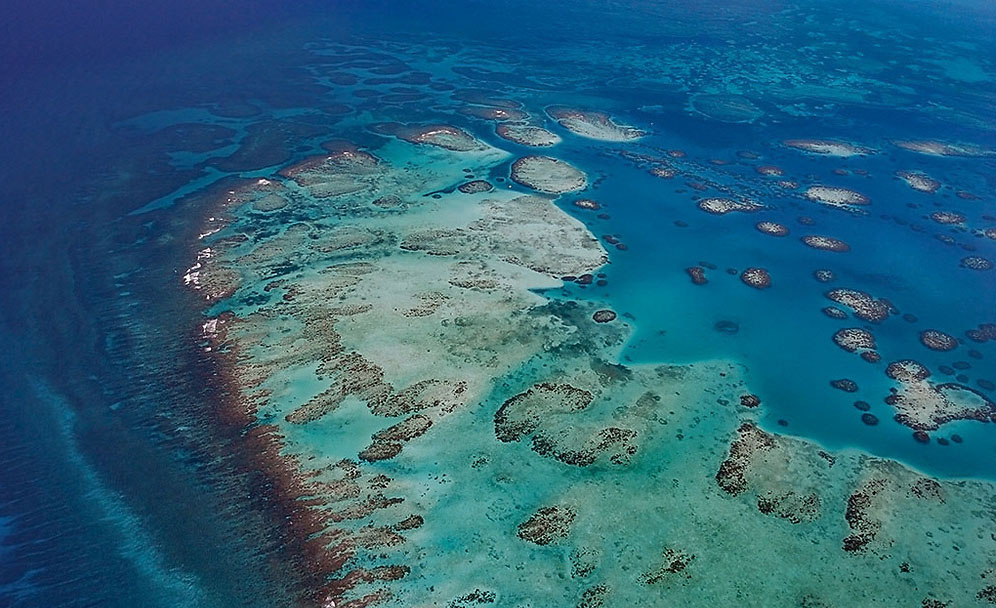
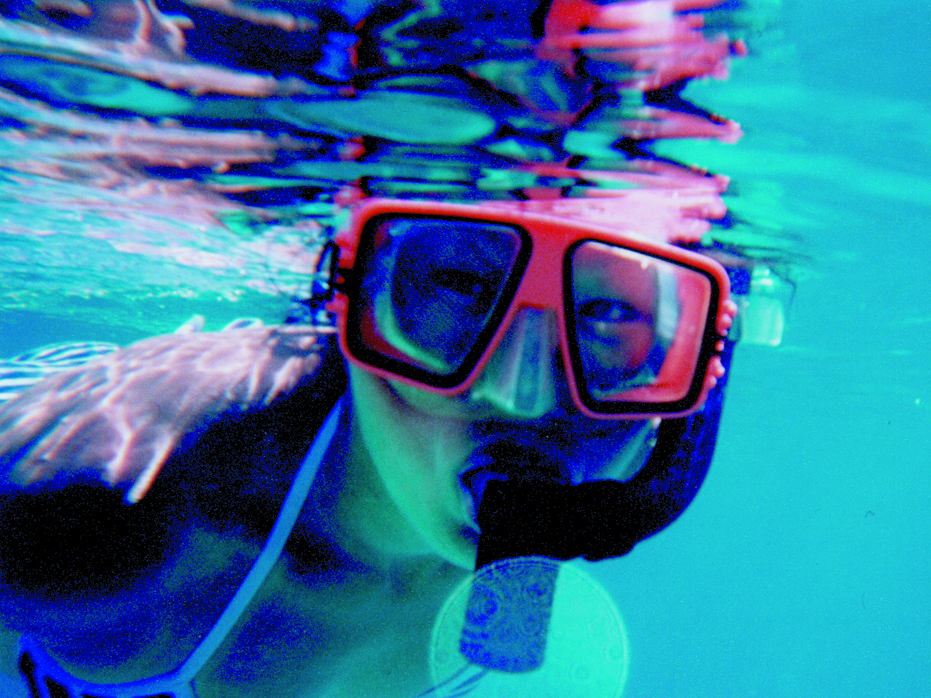
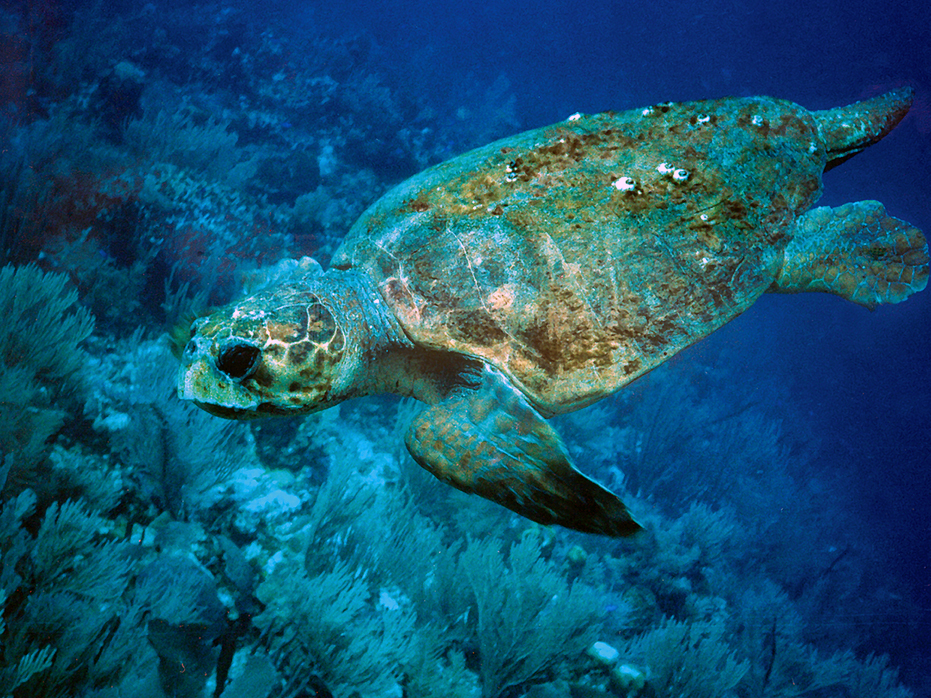
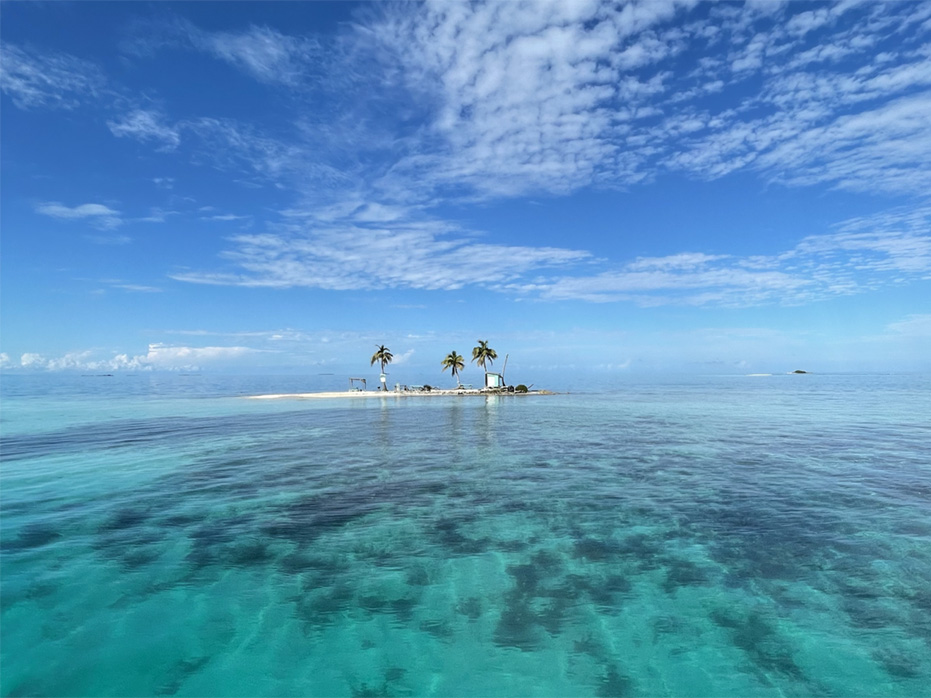
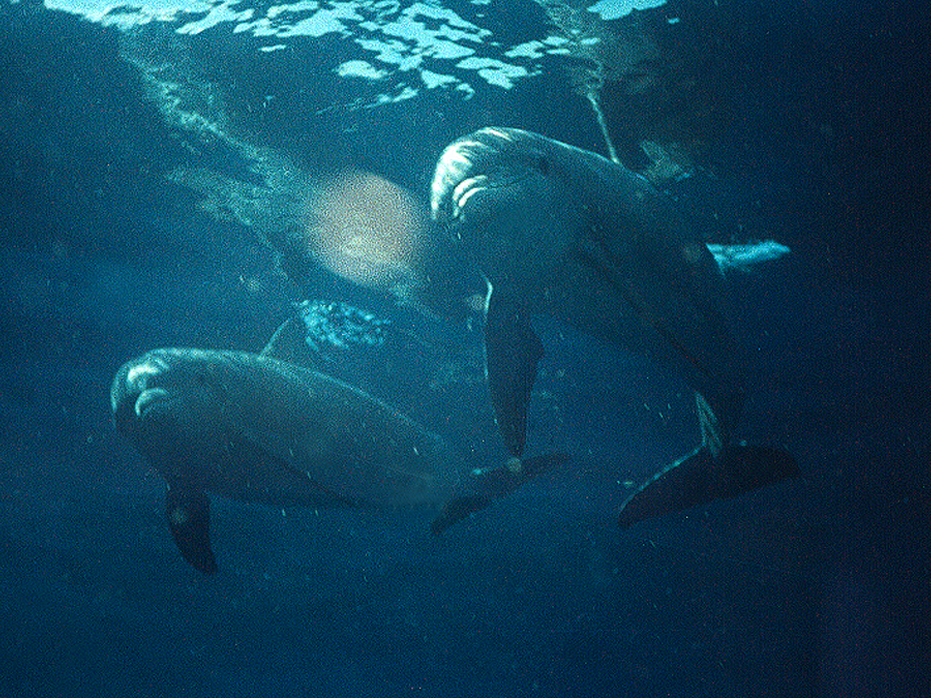
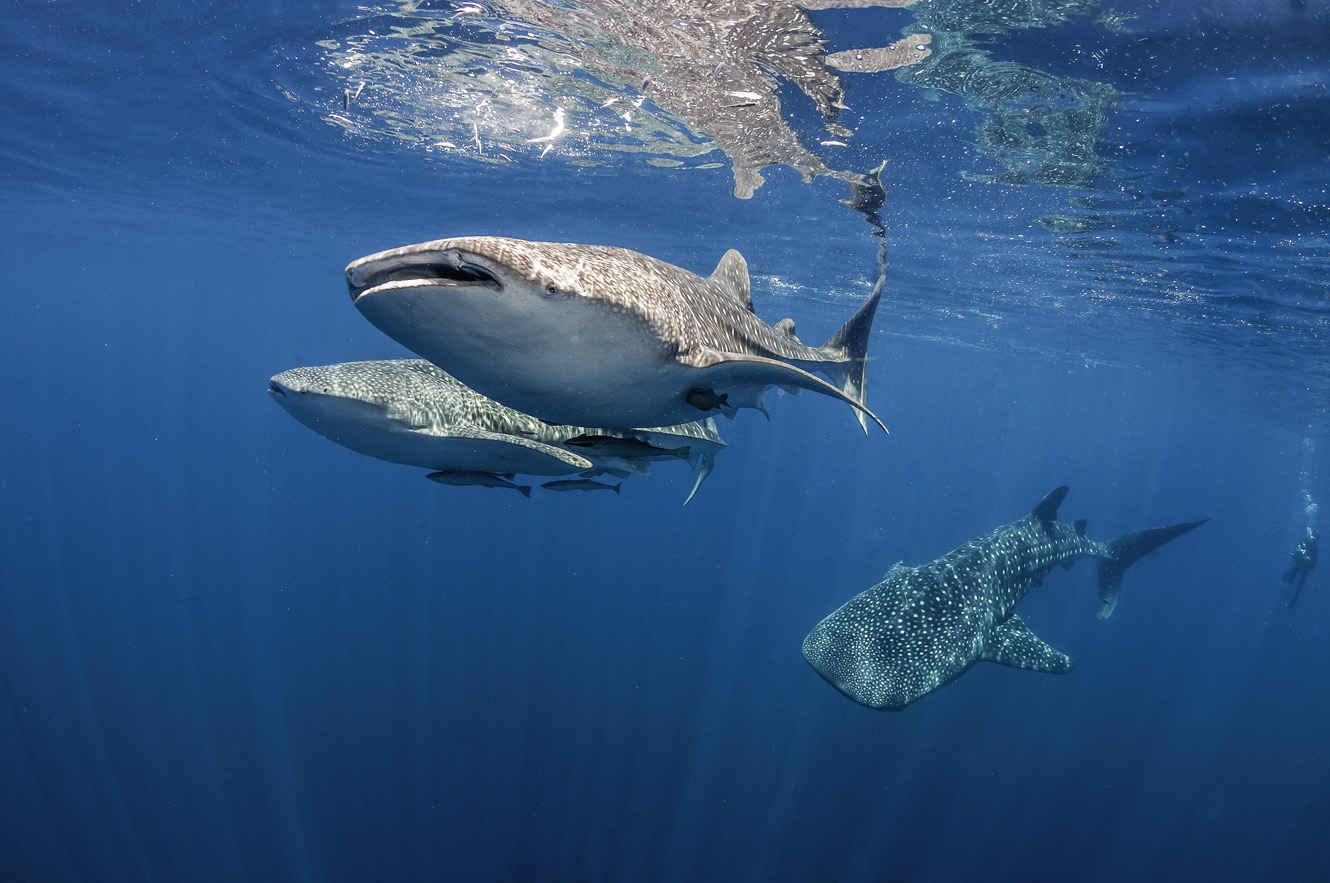
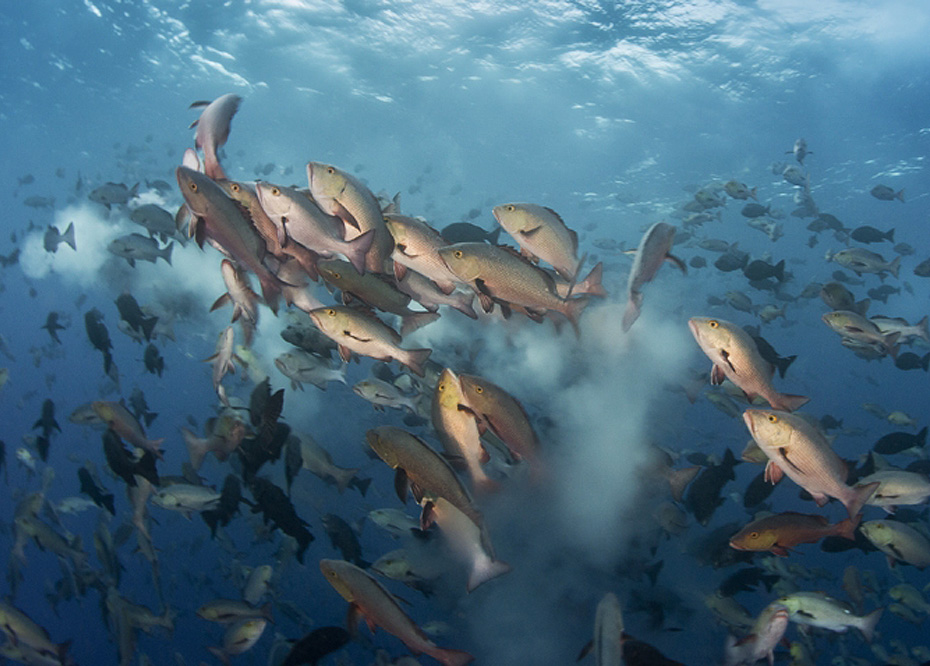
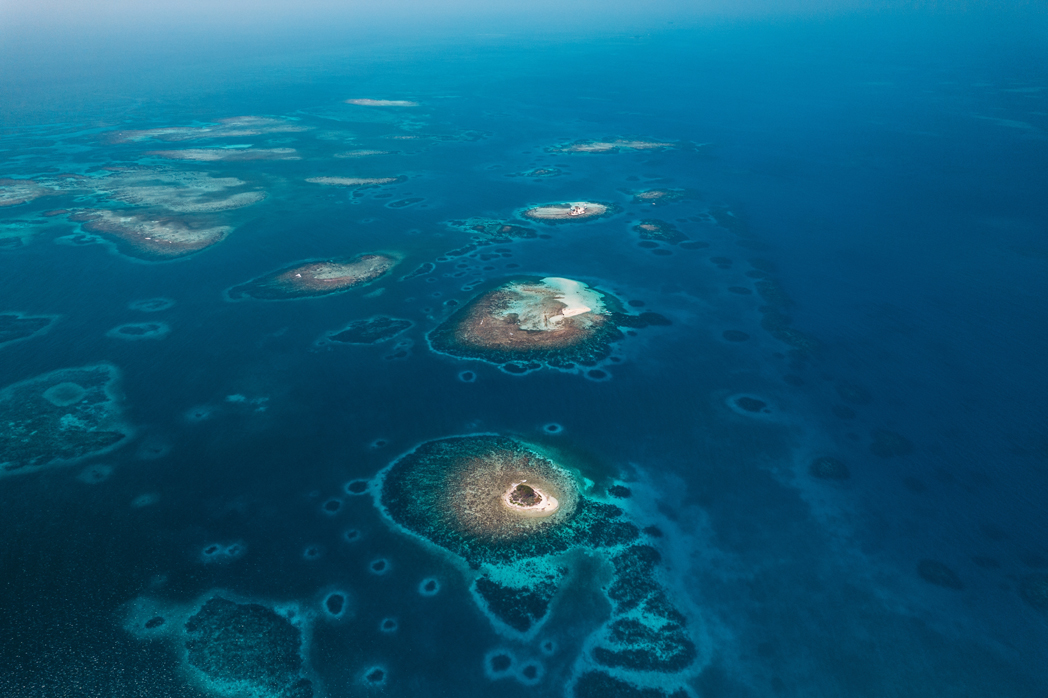
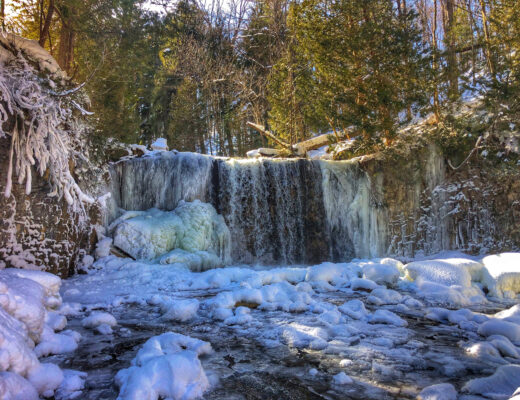
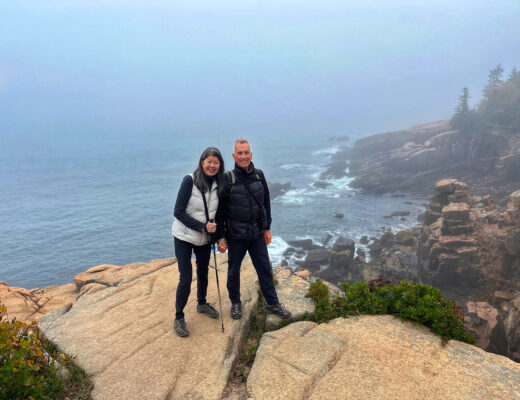
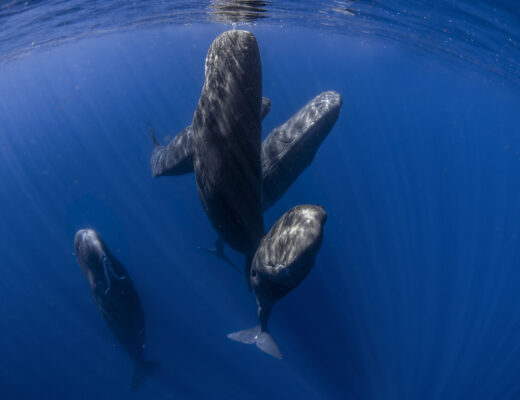

No Comments